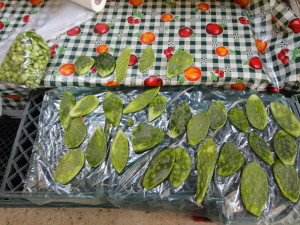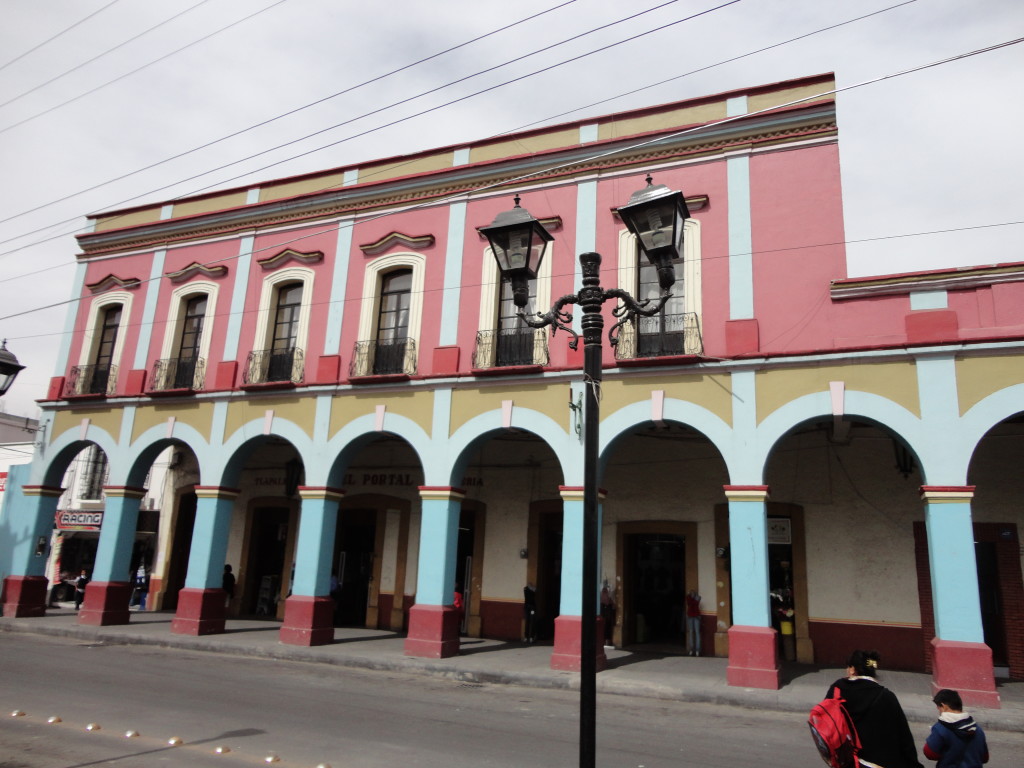Texcoco is where I spent most of my childhood years.It is a town located east of downtown Mexico City. During pre-Hispanic times, the Texcoco Lake used to connect the great Tenochtitlán (the Aztec capital) with the lordship of Texcoco. The conquistador Hernán Cortés took over Texcoco and used it as a base in which to plan the defeat of Tenochtitlán in 1521.
When I returned to Texcoco this past December 2011,I visited the main square. I could tell that the local government was investing in maintenance for the the square which included newly painted buildings and well kept green areas within the plaza. During this visit, it was easy for me to see the contrasting cultural influences that inform the town’s complex identity. The buildings in the square maintain the Spanish colonial style, but are painted with contrasting colors, which I associate with Indigenous traditions. I found a monument of Silverio Perez – a local and very famous bullfighter – right in the square’s gardens. This was something new to me. I interpreted it as a memorial to the matador, who past away in 2006. Silverio Perez was, and continues to be a local icon. Texcoco is famous for its annual International Horse Fair. This fair is clearly a tradition coming from the Hispanic root of Mexican culture. These traditions include bull and cock fights, as well as horse trade, and jaripeos, which are similar to rodeos.
At the same time, I realized that there is another cultural influence taking place in Texcoco. Inside the market place I found a strange combination of local produce with falluca, which is slang for products smuggled in from the United States. One image that caught my attention was that of a welcome sign located in the dining area. When I was eight years old, I enjoyed going to the San Antonio market to eat tlacoyos, one of Mexico’s most humble and traditional meals. They are of Indigenous origin. Tlacoyos consist of corn breads stuffed with black beans and are usually served with a cactus and coriander salad on top. I recall seeing the virgin’s altar in the dining area. However, I don’t remember seeing the ad posted next to it. During my visit to the market last year, I did not eat tlacoyos. Instead, I focused on the market’s environment. I was intrigued by the juxtaposition of an idealized depiction of a Mexican woman with an image of the virgin. First, I thought it was a sweet gesture. I thought that the ad was placed next to the virgin because it is a welcome ad. It is possible that the people who mounted the ad on the wall were symbolically looking for the Virgin’s blessing.
Veronica Sahagunn (2011). Nopales (Cactus) Stand in the Texcoco Market.
However, I also realized that this image of an “idealized” Mexican woman had little to do with reality. The ad itself reminds me of American popular culture in its early years. This is not just because there is a Coca-Cola logo on it. It has to do with the rendering of the Mexican woman. A more conservative representation would have consisted of a woman with a darker skin. I feel that this rendering is trying to make a Mexican woman look like the women on American labels from the sixties. Thus, the ad was hand painted on a surface made out of common floor tiles. This for me, this attests of a high degree of technical skills. I wonder why a Mexican painter would try to render an idealized Mexican woman in this way. A possible response is that he or she was paid to do this work. This made me feel uncomfortable. In a way, this is a reminder that in Mexican society, it is preferable to have fair skin. If I may say so, it is preferable to a foreigner living in Mexico than an average Mexican mestizo. As I see it, this is part of our colonial heritage in which being white was equal to having money, status and power. Finding this image inside a dining area where people eat traditional Mexican food makes me sad. It shows that there is more appreciation for American popular culture than for our own. The food sold in this market comes from our Indigenous roots. Therefore, to me, this image represents the contradictions that Mexican people face in the construction of our own cultural identities.
Veronica Sahagun (2011). The Arches of Texcoco de Mora.
References
Pulido, R. (2013). Texcoco. Retrieved September 23, 2013, from http://portal2.edomex.gob.mx/edomex/estado/identidadmexiquense/fiestas/texcoco/index.htm

